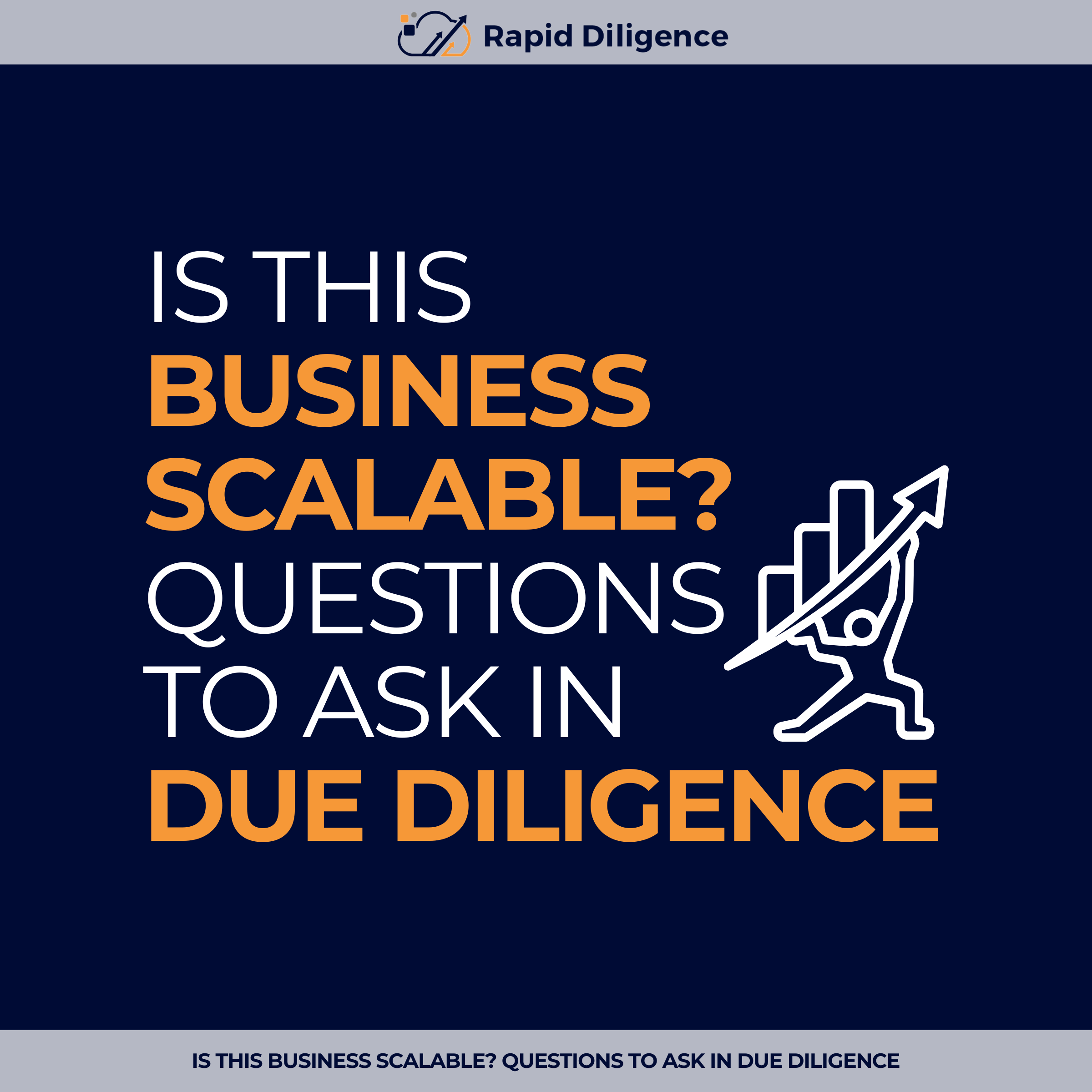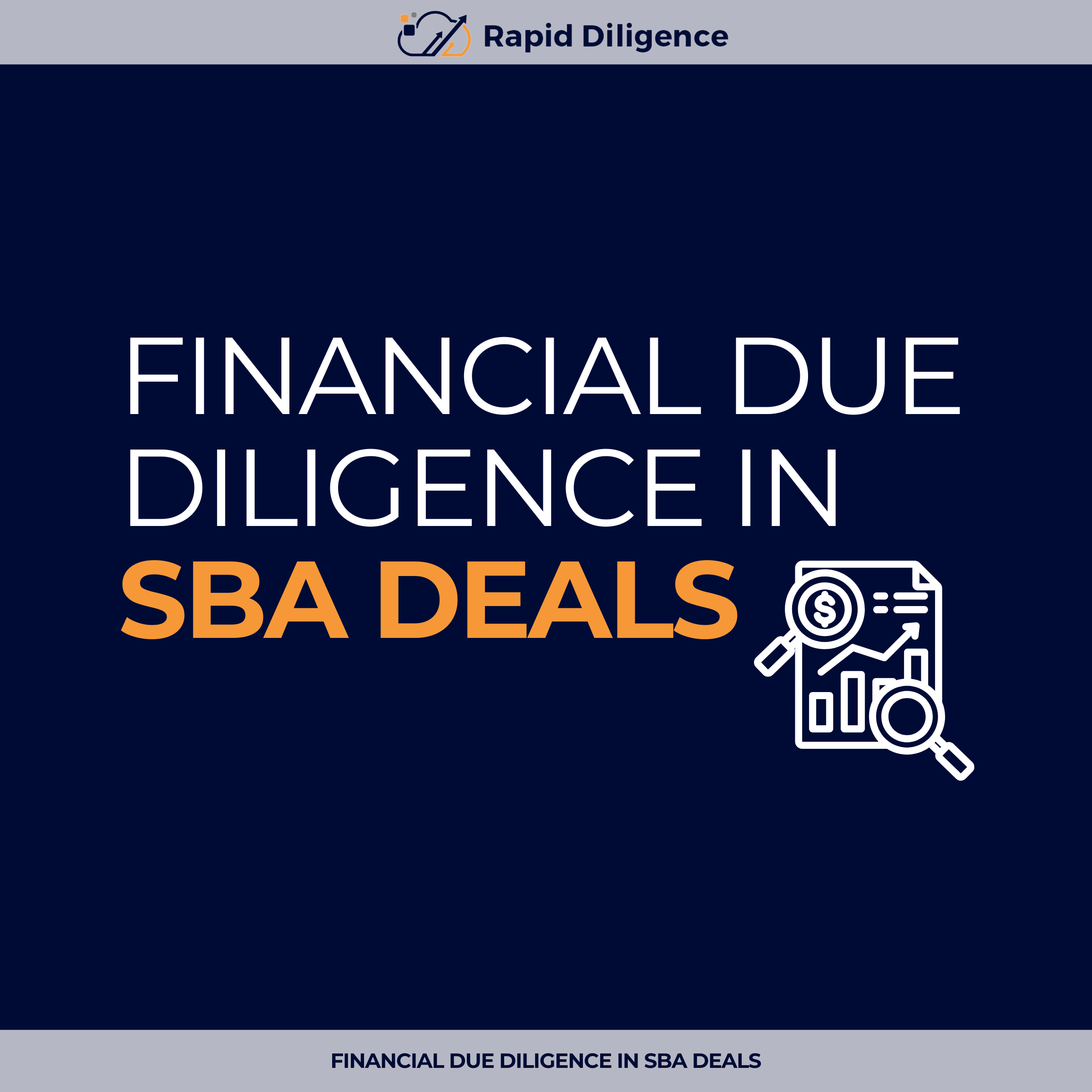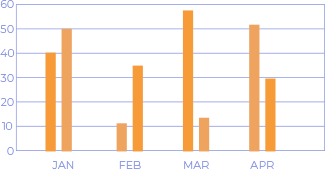For many acquisition entrepreneurs, growth is part of the plan. You’re not just buying a business to maintain it. You want to grow it. Maybe that means expanding into new markets, adding service lines, or increasing efficiency and margins over time.
But not every small business is built to scale. Assuming it is, without doing the work to verify it, can lead to frustration, stalled growth, or operational headaches after closing.
That’s why scalability needs to be evaluated during due diligence. Not six months into ownership.
Here’s how to approach it, what to look for, and the key questions you should be asking.
What Do We Mean by “Scalable”?
Let’s start with the concept itself.
Scalability doesn’t mean overnight growth. It means the business can grow revenue and profits without a proportional increase in complexity, headcount, or cost.
Some companies are already on a path to scalable growth. Others have potential but need investment. And some aren’t set up to grow at all without major restructuring.
Your goal in diligence is to understand where the business sits on that spectrum and what would need to happen to move it forward.
Why Scalability Matters in Small Business Acquisitions
In large companies, growth often comes from capital allocation, acquisitions, or global expansion. In smaller businesses, it’s about operational leverage. Can you increase output without breaking systems or burning out staff?
Scalability matters because:
- It affects valuation. Buyers often pay a premium for businesses with growth potential.
- It impacts transition planning. If the business is owner-run and not process-driven, scale may be difficult until that’s addressed.
- It changes your risk profile. Businesses that rely on brute force, not systems, often struggle to handle increased volume.
If your thesis depends on growing the business post-close, you need to make sure that growth is realistically achievable.
Key Areas to Evaluate for Scalability
People and Org Structure
One of the first places to look is the team. Many small businesses run on a handful of people, often with one or two doing most of the heavy lifting. That’s fine for stability, but growth usually requires depth.
Questions to ask:
- Who owns each key function: sales, operations, finance, service delivery?
- Are there documented processes, or is everything person-dependent?
- Can new hires be onboarded quickly and effectively?
- If you double revenue, do you have the management structure to support it?
If the answer to most of these is no, that doesn’t mean the deal is bad. It just means you’ll need to factor in hiring, training, or process development after closing.
Customer Concentration and Channels
A scalable business has a path to predictable, repeatable customer acquisition. If all sales come from one referral partner or the owner’s personal network, that may limit growth.
Evaluate:
- How do customers find the business today?
- What percentage of revenue comes from a small number of clients?
- Are there documented marketing or sales processes in place?
- What’s the lifetime value of a customer, and how long do they typically stay?
The more repeatable and diverse the revenue streams, the more scalable the business is likely to be.
Technology and Systems
Good tools don’t guarantee growth. But poor systems will absolutely limit it.
If the business is still run from spreadsheets, sticky notes, and the owner’s memory, that’s going to be a problem once volume increases. Look for infrastructure that supports scale or at least won’t fall apart under pressure.
Assess things like:
- CRM and sales pipeline tracking
- Inventory or fulfillment systems
- Scheduling, invoicing, and payment processing
- Reporting tools and visibility into key metrics
You don’t need enterprise-grade software. But you do need systems that support consistency and reduce manual effort as volume grows.
Margins and Cost Structure
Scalability is partly a financial question. As the business grows, will it become more profitable, or will added costs eat up the gains?
Look at:
- Gross and net margin trends over time
- Labor costs as a percentage of revenue
- How fixed or variable the expenses are
- Whether the business benefits from volume discounts or automation
Ideally, your margins improve as revenue grows. At the very least, they should hold steady.
Owner Involvement
Many small businesses are successful because of the owner, not in spite of them. That often makes scaling difficult.
If the seller is handling sales, customer relationships, payroll, and vendor issues directly, that creates a ceiling. You need to assess whether their role can be delegated and whether the business can function without them.
Ask:
- How many hours a week does the owner work?
- What tasks can only be done by them?
- Who are the key customer and vendor relationships tied to?
- Is there a succession or transition plan in place?
This is often the most revealing part of diligence. If the owner is central to nearly everything and there’s no clear plan to transfer their knowledge or relationships, then scale will be limited until that’s resolved.
In some cases, the answer is to hire early. In others, it’s to delay growth initiatives until systems and people are in place. Either way, this needs to be accounted for before you close.
Signs a Business Might Be Scalable (With the Right Support)
Not every business is turnkey. Some are raw but promising. You might find opportunities that aren’t being taken advantage of simply because the seller didn’t have the time, capital, or motivation to pursue them.
Here are some positive indicators:
- Customers are coming in without heavy marketing spend
- Margins are healthy, and fulfillment or delivery isn’t maxed out
- There are inbound leads that aren’t being followed up on
- The team is lean but capable and open to growth
- The business is performing well despite lack of formal systems
If you see potential but also friction points, that can be a strong buying signal. Just make sure you have a realistic plan for where to invest after the deal closes.
Red Flags That Suggest Scaling Will Be Difficult
Spotting upside is important. But so is recognizing when scale will be slow, expensive, or unsustainable.
Be cautious if you see:
- A single person holding all the operational knowledge
- No SOPs, training documents, or repeatable processes
- High employee turnover or low accountability
- Systems that are manual, fragmented, or outdated
- A business model that doesn’t improve with volume
Some of these can be fixed. But they take time and money. If your plan depends on quick growth, weigh these risks carefully.
A Note on Deal Structure
Scalability is not just an operational concern. It can also affect how you structure the deal.
If you believe the business has upside but isn’t currently built to grow, consider negotiating:
- A lower price based on current performance
- Seller financing to reduce your upfront risk
- An earn-out tied to future growth
- A longer transition period with the seller involved in systematizing the business
Deal terms can create breathing room for you to invest in scalability. They can also protect you if it proves harder than expected.
Final Thoughts
Scalability should never be assumed. A business that looks promising on paper might struggle to grow without significant changes. And a quiet operation with no systems or marketing might be a strong opportunity if the fundamentals are sound.
Due diligence is your window into that reality.
Ask better questions. Look beneath the surface. Talk to employees. Watch how the work gets done.
The more clearly you understand whether a business can scale and what’s standing in the way, the more confident you’ll be when it’s time to close.
Contact us today or book a free consultation and learn how we can be a trusted partner on your next deal!







